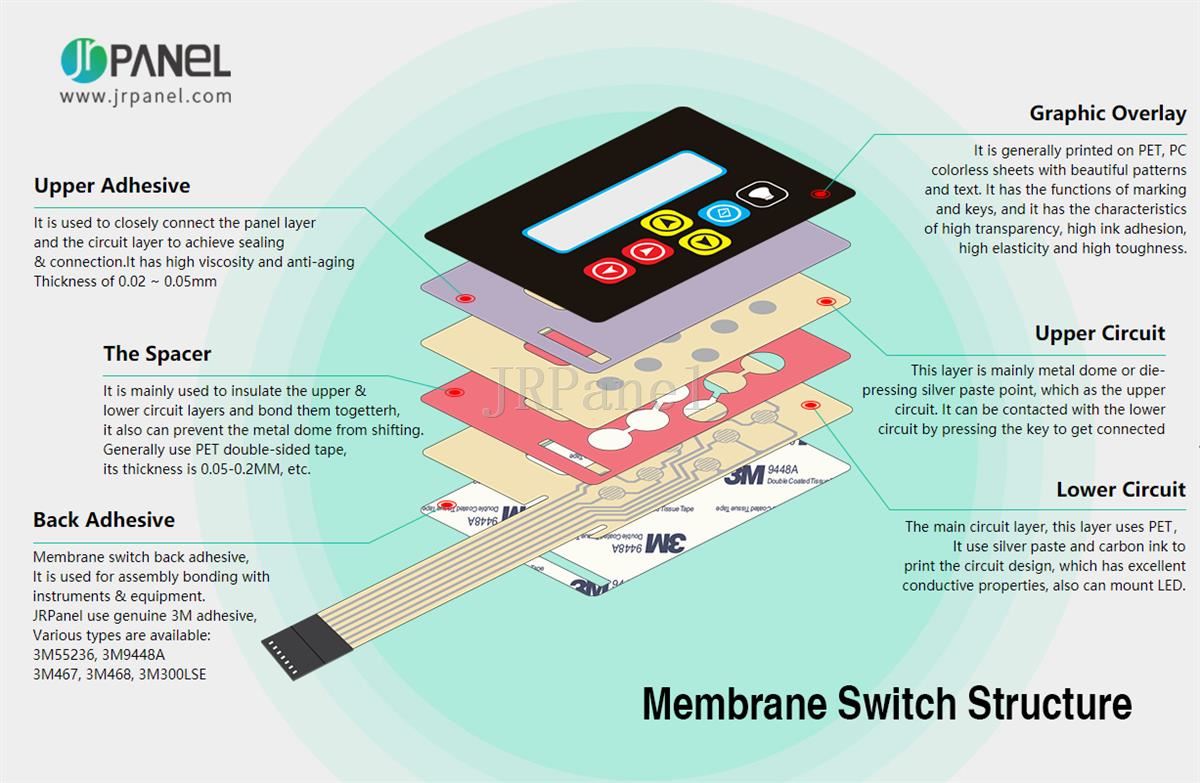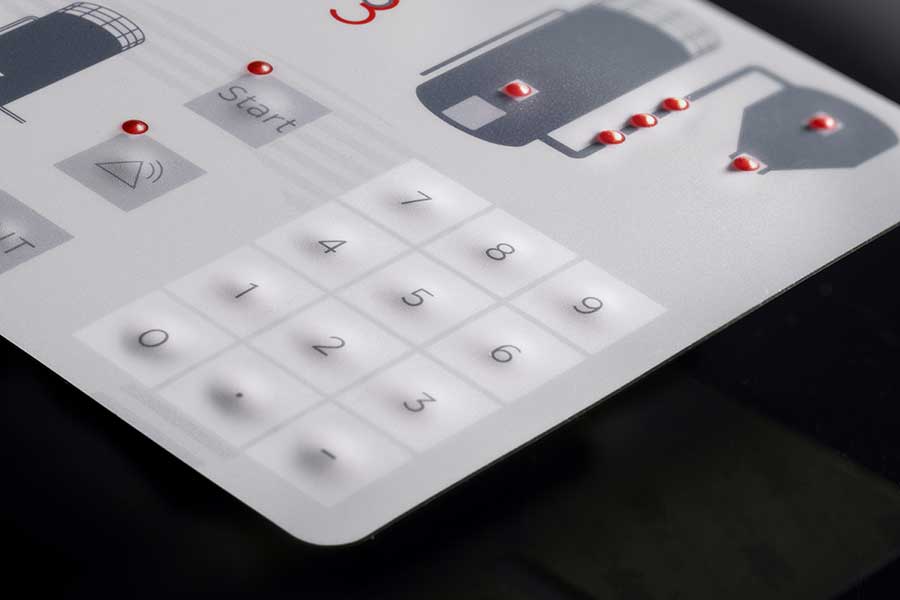Discover the Cutting-edge Production Techniques Behind Membrane Switches
Discover the Cutting-edge Production Techniques Behind Membrane Switches
Blog Article
The Ultimate Resource on Membrane Layer Changes: Layout, Functionality, and Applications
Membrane layer switches over serve as an interesting crossway of design and functionality, playing a pivotal duty in modern individual interfaces throughout different sectors. As we explore the diverse applications of membrane switches, it becomes evident that their flexibility and longevity are essential in settings ranging from healthcare to consumer electronic devices.

Understanding Membrane Switches
Membrane buttons are a type of interface modern technology commonly made use of in different digital devices, identified by their thin, versatile design and performance. These buttons contain numerous layers that consist of graphic overlays, sticky layers, and wiring, enabling a portable and efficient user interface for users. They can be discovered in devices, medical tools, and industrial control board, giving a trustworthy method for individual communication.
Among the primary advantages of membrane layer buttons is their ability to resist pollutants such as dirt and dampness, making them suitable for atmospheres where sturdiness is important. Their inconspicuous style permits smooth integration right into various applications, while the customizable graphic overlays boost customer experience by offering clear aesthetic responses. Additionally, membrane layer switches can suit a variety of technologies, such as tactile feedback and backlighting, further improving their usability.
The production procedure for membrane layer switches over usually includes screen printing, die-cutting, and lamination techniques, guaranteeing accuracy and uniformity in production. Overall, membrane layer switches over represent a effective and functional solution for modern-day digital tools, combining performance with visual allure in user interface layout.
Secret Components and Layout Aspects
A range of crucial parts and layout aspects come together to create an effective membrane layer button. At the core, the visuals overlay serves both aesthetic and practical purposes, using an easy to use interface while safeguarding internal components from ecological variables. The option of products, commonly polyester or polycarbonate, affects longevity and tactile feedback.
Under the overlay, the glue layer guarantees the switch sticks securely to the substratum, which can be plastic, glass, or metal. The spacer layer is crucial, as it keeps the required space in between the circuit and the overlay layers, permitting efficient actuation. Membrane Switches. Circuit traces, usually made from conductive ink or adhesive, are printed on an adaptable substratum, allowing electric signals to be transmitted when pressure is used
Design considerations additionally include the setup of responsive domes or embossing that offer physical responses to the individual, boosting the general experience. In addition, the format and spacing of the switches need to be maximized for convenience of use, making certain that users can navigate the interface without effort. Overall, these elements and layout elements work synergistically to produce a dependable, practical membrane layer switch tailored to certain applications.
Capability and Procedure Mechanism
At the heart of efficient performance for membrane layer switches exists their functional mechanism, which assists in customer communication with an easy yet reliable design. These buttons run on the concept of stress activation, where an individual uses pressure to an assigned location of the button (Membrane Switches). This activity presses the layers of the button, finishing an electrical circuit that sends out a signal to the connected device
The building normally includes a top graphic layer, a sticky spacer layer, and a bottom circuit layer, which collectively form a durable user interface. When stress is used, the leading layer falls down versus the bottom circuit layer, allowing conductive traces to connect. This design not only allows clear tactile feedback yet also guarantees longevity and reliability, as the switches are commonly immune to dirt and wetness.
In addition, the versatility of membrane layer switches over enables assimilation with different technologies, consisting of LED indications and microcontrollers, improving their functionality. By supplying a structured user interface that minimizes mechanical wear, membrane layer switches continue to be a preferred selection in applications ranging from customer electronics to commercial tools, making certain optimal efficiency and user complete satisfaction throughout diverse settings.
Kinds Of Membrane Buttons

One more considerable classification is illuminated membrane switches, which include backlighting to enhance exposure in low-light problems. These switches are often used in control panels and dashboards where clear exposure is vital.
Additionally, there are personalized membrane switches over designed to meet particular dimensional, graphical, and functional demands. These personalizations can consist of one-of-a-kind forms, shades, and designs, permitting smooth integration into different tools.

Applications Throughout Numerous Industries
Just how do membrane layer buttons boost capability throughout diverse sectors? These functional parts are indispensable to countless applications, supplying structured individual interfaces and robust efficiency. In the medical industry, membrane layer buttons play a critical duty in gadgets such as diagnostic tools and person tracking systems, where reliability and convenience of cleansing are vital. Their ability to withstand rough atmospheres makes them suitable for laboratory tools and surgical tools.
In the vehicle sector, membrane buttons are commonly used in control panels and control board, offering instinctive controls that enhance motorist safety and security and benefit. The customer electronic devices industry likewise gains from their lightweight and adjustable attributes, enabling streamlined designs for mobile phones and home devices.
Moreover, membrane buttons find applications in commercial automation, where they add to effective machinery operation and tracking systems. Their resistance to dust and wetness ensures performance in demanding conditions (Membrane Switches). In addition, the food and drink sector employs membrane layer buttons for equipment control, where health and resilience are critical
Final Thought
To conclude, membrane switches represent an important technology in customer interface modern technology, characterized by their distinct layout and capability. Their essential components, including graphic overlays and circuit traces, contribute to their operational efficiency through pressure activation. The convenience of membrane layer switches facilitates their application across varied sectors, from medical devices to customer electronic devices. This detailed understanding strengthens the importance of membrane buttons in boosting item functionality and sturdiness in contemporary technological read the article settings.
Membrane switches offer as a Going Here fascinating junction of layout and performance, playing a pivotal duty in contemporary customer interfaces across numerous markets.Membrane buttons are a type of individual interface technology extensively utilized in various electronic tools, defined by their thin, adaptable design and capability.At the heart of efficient functionality for membrane layer switches over lies their functional system, which helps with user communication with an easy yet reliable style. These buttons operate on the principle of stress activation, where a user applies pressure to an assigned location of the switch.In final thought, membrane switches over represent a crucial development in customer interface modern technology, characterized by their distinct layout and capability.
Report this page